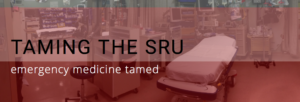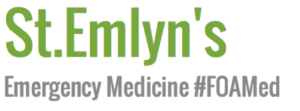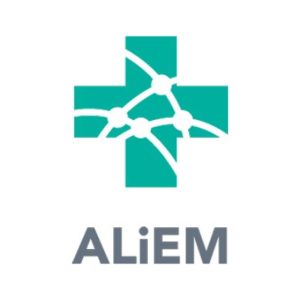Nursing FOAMed Review #2 (Aug 9th – Aug 20th)
Dr Benoit from Taming the SRU gives us a list of his top “practice-changing” articles for 2017-2018 in the “grand-rounds recap” series. An awesome line up of some really great articles for anyone who is interested in critical care or emergency medicine. Every article listed is conveniently hyperlinked to publication sites. So if you are in a med lit sort of a mood, email this link to yourself and get to your nearest medical library and do some reading. This might be the best power line-up of medical literature you’re going to see for a while. Some highlights:
- Effect of treatment delay on the effectiveness and safety of antifibrinolytics in acute severe haemorrhage: a meta-analysis of individual patient-level data from 40 138 bleeding patients
- Effect of Use of a Bougie vs. Endotracheal Tube and Stylet on First-Attempt Intubation Success Among Patients With Difficult Airways Undergoing emergency Intubation
- Prevalence of Pulmonary Embolism in Patients With Syncope
- Mortality and morbidity in acutely ill adults treated with liberal versus conservative oxygen therapy (IOTA): a systematic review and meta-analysis
Dr Rick Body writes this article for St Emlyn’s about a vitamin supplement that could be giving us false negatives on our Troponin tests. Apparently Biotin (aka vitamin B7) supplementation can affect specific POC and laboratory Troponin tests. The article points out the up to 7.7% of American patients may be taking supplemental Biotin (probably for hair and nail growth – even though there is apparently no good evidence that Biotin works to correct these ailments). The article contains an exhaustive list of the specific Troponin assay tests that Biotin can affect. It’s an interesting read that makes me think perhaps nurses need to start asking about Biotin supplementation prior to pulling troponin immunoassay labs.
St Emlyn’s also has a short bit on some of their contributor’s favorite apps. I love sharing quality learning apps, so I have to share this link. These apps are supposed to be “new” – but looking at release dates, many of them have been out for a long time. Among those of real interest to me are the POCUS apps available. Some are free and some are expensive – but definitely worth a browse for anyone interested in a quick FOAMed diversion on their phone while standing in line at Starbucks.
Among some of my personal favorites missing from this particular list are WikEm, Figure 1, and UBC Radiology. Check them out for a quick bite of FOAM on the go.
emDocs has an incredible write up by Paul Zentko with some great clinical pearls on psychiatric medications in the ED. Some pretty eye opening numbers pertaining to psych meds contained within this article, such as: up to 1 in 6 adult adults in the US fill a psych med prescription at some point in the year, and up to 10% of ED visits due to adverse drug reactions are related to psychiatric medications. It is a short article but does a great job going through a relatively thorough review of:
- SSRIs
- A quick SSRI med review – names, prevalence in the general population and discussion of relative safety and overdose concerns.
- Notes on the relative dangers of citalopram and escitalopram concerning seizure activity and EKG changes.
- Links to a wonderful and super helpful tox card on the differences between Neuroleptic Malignant Syndrome and Serotonin Syndrome
- Abrupt discontinuation leading to “discontinuation symptoms”
- Lithium
- Discussion of narrow therapeutic index and treatment considerations for acute v chronic overdose
- nice overview of lithium excretion/metabolism
- Typical v Atypical Antipsychotics
- Lists of common medications in these classes
- Good review of EKG changes to expect and what risks these medications can pose for our ED patients.
- Overdose treatment protocols
Another awesome aspect of this article is the to Dr Katy Hanson’s website. Check out her drawing at the bottom of the article with all the different psychiatric medications and tell me if you can think of a better way to learn these drugs!? Without her drawings I would have had to do a lot more dry and boring studying to get through anatomy and physiology. If you haven’t checked out her page yet you really should.
Dr Josh Farkas writes in PulmCrit about the use of BP monitoring in septic patients on vasoconstrictors. While this article at first appears to be only geared towards critical care docs, we need to take a moment and see how it can be applied to those of us (doctors and nurses) that work in an ED setting. Even if this literature review doesn’t change practice, we should all be aware of the information broken down in the review. Nurses caring for patients on pressors must be made to understand that there can be a propensity to over dose on pressors if radial sites are being used instead of femoral sites for arterial blood pressure monitoring. Read the article to understand the difference in accuracy between non-invasive BP monitoring and what the available literature tells us about the difference between radial and femoral arterial BP MAP monitoring when the patient is on pressors. Per usual with EMCrit, there is a phenomenal breakdown of the available high-quality data, a simple discussion of why this data may change our understanding and approach to invasive blood pressure monitoring, and then a recommendation for future practice.
Dr Sean Hickey writes this about TAPSE (a POCUS test called tricuspid annular plane systolic excursion) for PE risk assessment and prognostic considerations. It seems like an easy enough bedside test for anyone who has gone through a ultrasound course/fellowship. I like this article’s timing because it ties in so well with the thorough review of PE published in Emergency Medicine Cases that I have tagged in this same FOAM review. (Thank you EMCrit for the sources cited list – about 50 articles long here if you want to dive super deep into TAPSE tests.)
CanadiEM adds to their “Blood & Clots Series” with this article discussing PE diagnosis in late stage pregnancy. Dr. Eric Tseng writes about these main takeaways from the current literature that we need to be aware of:
- Wells Score and D-Dimer are not predictive within the pregnant population (at least not yet as there have been no published studies confirming utility) so we cannot be effectively utilizing those prognostic tools on these patients.
- Recommendation to use bilateral compression ultrasound as a precursor to V/Q and/or CT-PA as if the ultrasound comes back positive, treatment is the same.
- According to the literature sites in this article, both V/Q and CT-PA are deemed safe (sub-teratogenic) for pregnant patients.
Paula Sneath is a PGY1 that wrote a great piece on esophageal foreign body obstructions. Nothing mind-blowing here, but a great review of the anatomy, patient population, and possible negative sequelae on patients presenting to the ED with EFBOs. A couple of very interesting points:
- A quick discussion on Glucagon for these patients – to administer or not to administer, this is the question still apparently. Rosen’s says no, other sources are still clinging to weak evidence despite the known side effect of vomiting which can take this patient from bad to worse.
- A rundown on upper EFBO removal with a Foley catheter. Which, if I’m going to be honest, I am going to bring up EVERY time I see a upper EFBO from now on. Forever. I can’t wait to see someone shove a Foley down an esophagus, inflate it, and slowly pull up a meat bolus.
Dr Joseph Levin, a PGY4 at Bellevue writes for R.E.B.E.L.em about C-spine clearance in the ED for ETOH patients. this is a short but sweet review on this article from the Journal of Trauma and Acute Care Surgery. Among the interesting pearls:
- Not that it is highlighted – but the numbers seem to indicate that ETOH and illicit drug intoxication c-spine injuries are 2x that of ETOH alone. An interesting find when looking at the injury rates among different patient populations.
- This conclusion: “For intoxicated patients with a negative cervical spine CT, there appears to be little benefit to maintaining prolonged immobilization unless there is an obvious neurological deficit or high degree of suspicion for cord injury. This is consistent with previous literature in CT performance in obtunded patients.”
R.E.B.E.L.em also wrote a quick review on HFNC (high flow nasal cannula) for those that aren’t quite familiar with this wonderful tool. We are starting to see this used more and more in adult EDs across the country – as nurses we need to get used to the idea that HFNC is a tool we are going to need to be comfortable with. This hyperlink above is only the first part of the article – and reviews the functionality of HFNC and not it’s use in treatments. Stay tuned for “part 2”.
Dr Anton Helmen of Emergency Medicine Cases writes an incredibly thorough article on diagnosing PE in the Emergency Department. (There is a podcast to go with this article, which I will try to review later – but clear 93 minutes out of your schedule if you are interested in listening.) This article is thorough, specific and has loads of great hyperlinks to other opinions, articles and websites – backing up all the recommendations with well known studies and really taking a deep dive into the numbers that we should all be aware of. If you have the time to spend, this is a great review of diagnosis and treatment and care of PE in the ED.
- Mortality rates and, in my opinion, the absolutely terrifying finding that “85% of PE mortality in ED patients occurred in untreated patients while waiting for diagnostic confirmation according to EMPEROR Registry.”
- A high quality pearl on how to parse out true exertional dyspnea.
- A logical an no BS approach to how we should implement the PESIT trial (Syncope and PE in the ED). (Basically: we should be treating chief complaint of syncope like we do everyone else when considering or ruling out possible PE.)
- 50% of PEs are found in patients with no 0 Wells’ Score.
- A quick EKG rundown talking about the lack of sensitivity of S1Q3T3 and reminding us to look for inverted T waves anterior and inferior leads as this is the most specific finding on an EKG.
While we are on the subject – might as well link to the MedCalc Wells’ Criteria as well as the PERC score so that we can all review if we don’t have it memorized.
Nursing FOAMed Review #1 (Aug 1st – 9th)
ALiEM brings us a great overview of maternal cardiac arrest. This article also comes with a link to ALiEM Cards on the same material. If you have never browsed the ALiEM Cards before – they are amazing and definitely worth your time. Articles such as this are always appreciated – any lesson on resuscitation that goes beyond the typical AHA ACLS course is worth a mention. Some really great takeaways here include:
- A great list of common causes of maternal cardiac arrest.
- How to anticipate potential magnesium and calcium based pharmacological treatment of arresting maternal patients.
- Recommendations of IO access above the diaphragm!
- Knowing to expect immediate C-section if ROSC is not within only 2 rounds of CPR.
- Intralipid use guidelines for patients with arrest after potential anesthetic toxicity.
A couple of very good FOAM sites have write ups on Morphine use in acute heart failure. Dr James Fletcher guest writes for R.E.B.E.L. EM on this post. The post references this article, a multicenter, observational, propensity matched cohort study, that compares mortality rates among two groups of acute heart failure patients – those that received Morphine and those that did not. There are some issues with the study, all of which are thoroughly discussed within the article written by Dr. Fletcher. There are also a few other studies mentioned that link Morphine with increased mortality in patients who present with acute heart failure.
One of the best takeaways from this review is this small segment: “The European Society of Cardiology guidelines on the treatment of heart failure recommend against the routine use of opiates, while the American Heart Association recommends opiate use in heart failure be limited to the palliative care of patients with end-stage HF and severe respiratory distress.” As a nurse, we sometimes find ourselves turning to Morphine for AHF patients, and sometimes not. This article can help us understand what our physicians are thinking.
emDocs did a similar article, but with a bit wider scope. Entitled Myths in Heart Failure: Part II – ED Management, this article is less of a single article review, and more of a case study about patients presenting to an emergency department with acute heart failure with concurrent hypertension. This emDocs article reiterates the lesson from R.E.B.E.L. EM about Morphine potentially increasing mortality for AHF patients, but there is also an incredibly thorough list of clinical pearls for AHF with hypertension such as: guidelines for diuresis, use of nitroglycerine, the aforementioned consideration of opioids, and a very cool bit on ultrafiltration for patients refractory to front line diuresis treatment. (This is the second part of a series from emDocs, the first in the series, an article called Myths in Heart Failure: Part I – ED Evaluation was published in late July and is definitely worth a look.)
A very prescient article concerning pain management from Annuls Of Emergency Medicine has sparked some chatter on emDOCS.net. Anyone who still works in an ED that is handing out Dilaudid like candy knows that we are contributing in our own way to the opioid epidemic. emDOCS.net shares a great article by Doctor Casey Wilson on nerve blocks on their use in emergency departments for the control of pain. (If you don’t have access to Annuls of Emergency Medicine there is a great podcast that gives you a quite thorough roundup here.) According to Dr. Wilson nerve blocks can be used for “fractures, joint reductions, complex laceration repairs, chest tube placements and paraphimosis” and have been shown to be even better than opioids for some older patients with femur fractures. Not that I wish any nurse to be flooded with paraphimosis cases – but the article is pretty cool in that it explains the simplicity of ultrasound guided nerve block procedures while providing readers with some great PDFs. Another really interesting point, especially for those wanting to increase throughput in the ED, references (small) study done in 2008 in the American Journal of Emergency Medicine which showed ultrasound guided nerve blocks for upper extremity injury actually reduced the average length of stay in the ED by 3 hours! A very cool share and worth a link to your Sono Fellowship director.
CoreEM brings us a great review on Acetaminophen overdose written by Dr. Magda Robak. This is a simple but effective teaching module for anyone who wants to review the most common single cause of acute liver failure in the US. The article reviews the Acetaminophen nomogram and also shares a simple but fantastic spreadsheet that I think can be very useful, especially for nursing triage and early nursing care:
Justin Morgenstern writes for First10EM and shares with us a case study on post tonsillectomy hemorrhage. This is one of those great FOAM articles that really packs a huge punch. First10EM takes a patient that seems simple enough – a potentially severe oropharyngeal bleed – and takes a quick, but incredibly thorough dive, into treatment considerations in the ED. There is a lot here for the ED nurse to unpack. Some highlights from this article include:
- Simple positioning of the patient makes a huge difference in management in the first minutes of patient care.
- This patient may need a blood transfusion! IV Tranexamic acid may be called for, but surprisingly DDAVP can also be empirically used, as undiagnosed Von Willebrand disease is apparently somewhat common in these patients.
- To use an NG tube or not to use an NG tube – a great discussion between two ED docs.
- Stop the bleeding is the name of the game – but what to do first? Try direct pressure with McGill’s forceps, or stick your fingers in the mouth and try to apply direct pressure with some gauze soaked in tranexamic acid and DDAVP? If none of those options work, or if they are not plausible, should we try to apply pressure to the carotid?
- Intubation considerations, and which drugs might need to be prepped for induction.
- Simple recommendations are sometimes the most amazing – while we are all running around focusing on stopping the bleed, make sure you don’t forget to recommend antiemetics! The patient has probably swallowed a lot of blood and an episode of violent emesis can destroy any clot that is beginning to form, so make sure to remember that the patient needs a hefty dose of antiemetics.
The Bottom Line writes a critical review of the PAMPer paper that was published in late July by NEJM. This trial aimed to find a difference in survivability between air transported trauma patients that received either fluid crystalloid boluses, or plasma. This Bottom Line post outlines the strengths and weaknesses of the PAMPer trial, as well as a short review of other similar trials, and why PAMPer is potentially so impactful. The paper showed a significant increase in survivability in the plasma group, as compared to severe trauma patients who received fluid crystalloids only. The study shows a 10% drop in mortality with an intervention of 600cc of thawed plasma. This mortality drop is so dramatic for such a slight intervention change, that there is a portion in The Bottom Line review that states the “biological plausibility” is questionable, which seems to be a nice way of saying that there are probably biases within the study that partially explain the survivability differences.
Either way, the PAMPer trial in NEJM, and The Bottom Line’s review of the article, are great reads for anyone who works air emergency treatment and/or Level 1 trauma medicine. We’ve known for some time that flooding patients suffering from hemorrhagic shock with NS increases our coagulopathy, acidosis (NS has a pH of approx. 5.5) and (unless the fluid is warmed) the likelihood of hypothermia. Treatment for traumatic hypovolemia that shoves the patient into the “trauma triad” should probably be avoided – so expect more trials like PAMPer and, hopefully, a change in paradigm in pre-hospital treatment for hemorrhagic shock patients.
Kristina Kipp writes for EMCrit to bring us a short review on an article that discusses the efficacy differences between Propanolol v Metoprolol in electrical storm arrests. This article from the Journal of American College of Cardiology is another piece of literature we can add to our arsenal of emerging information concerning electrical storm arrest patients. If you haven’t worked an electrical storm arrest resuscitation, this is a great article to get a glimpse at what may be different than a typical ACLS code. If you have worked an electrical storm resuscitation, read this article to see if your resuscitation team is following the newest recommendations in this emerging sub-class of VF or VT arrest. There is a great list of references at the end of the EMCrit article that is worth a review as well.
The first time I’d ever read about beta blockers during cardiac arrest was in CanadiEM almost a year ago. The infographics in the CanadiEM article are really fantastic and outline the basics of the pathophysiological logic that is applied to electrical storm arrests and why these particular resuscitations are so much different than our typical AHA ACLS boilerplate codes.
Not that this is typical FOAM sharing but – just wanted to link an incredible article from MSF on America’s attempt to ignore evidence-based practice and obliterate global women’s health access. The “Global Gag Rule” will link the funding of HIV treatment, tuberculosis programs, mother and child care, and other global health initiatives to regressive and morally bankrupt dogma. Read here to learn more about the view from the ground. https://www.doctorswithoutborders.org/new-global-gag-rule-more-dangerous-ever












